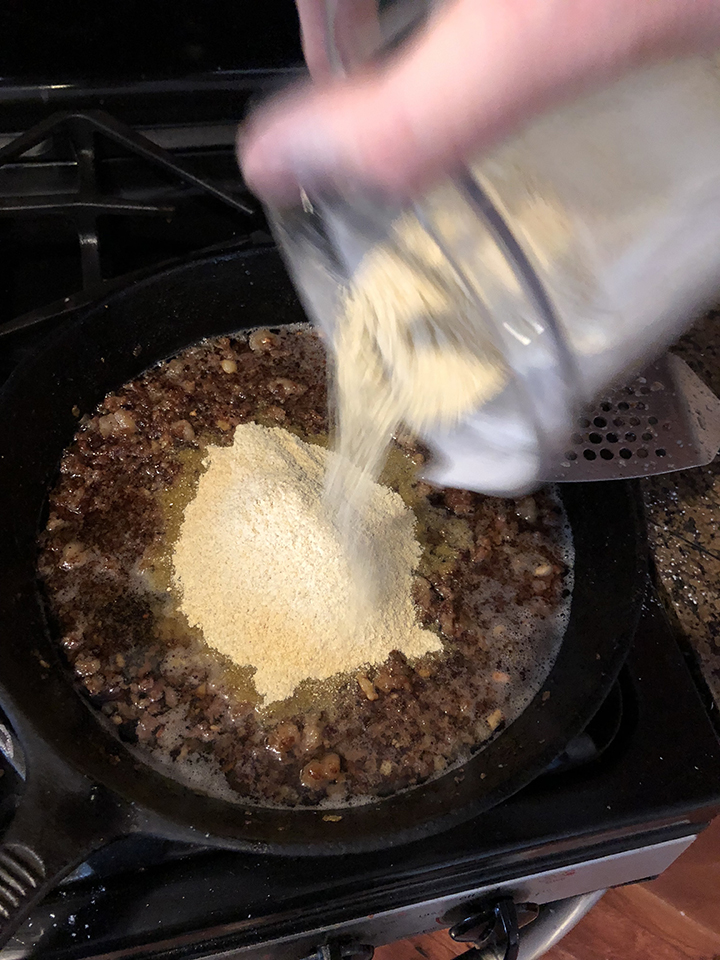I came across a fantastic book called "Camping and Woodcraft" by Horace Kephart. Published in 1957. It is jam packed with amazing traditional outdoor skills, gear and ideas. I recommend checking it out!
One of the things it mentioned is a food called Erbswurst. Which translates from German to mean pea sausage. I know, it sounds terrible, but hear me out! It's a mix of fats, and split pea flower squeezed into a sausage casing that was used heavily by the German soldiers during WWI. You can cut about an inch off the sausage and boil it to create a rich pea soup. And because of the high fat content it's very shelf stable. It's really an ideal survival and bushcraft food. It doesn't take up much space or require much prep work to make.
I decided to try this idea out, but I wanted to make a few adjustments. First of all, I decided to use lentil flour instead of pea flour. I prefer lentil soup and it's slightly higher in nutritional value.
I also adjusted the ingredients slight because I had a hard time finding hard fat. It's the pork fat that holds it's form and gives sausage its structure. I replaced the hard fat with regular pork fat sliced off a pork chop at the meet department of my local grocery store.
Here's my complete recipe:
Linsewurst (lentil sausage)
- 1/2 lbs. bacon
- 1/2 lbs. pork fat
- 1 lbs. Lentil flour
- 1/2 onion
- 3 teeth garlic
- Salt and pepper as desired
I began by putting the bacon, fat, onion an garlic in a food processor and turning it into a paste.
I put that paste into the frying pan and cooked it until it the fat rendered out and the onions and garlic cooked through.
While that was cooking I put the lentils into our Blendtec blender. It turned them into a nice powder pretty quick. There are other ways to do it. A grain mill or another heavy duty brand of blender will do as well.
When the bacon and onion mixture is nicely browned add the lentil flour. Mix it together well and be ready to work with it while it's still warm. It will start to set up once it cools and that makes everything more difficult. Because I didn't use the hard fat, it made the final product more soft and easier to work with.
Traditionally this mix would then go into a sausage casing. I didn't have any laying around and did really want to do that anyway, so I make my own casings out of vacuum seal bags. The long term storage of these in a freezer is my end goal and these bags made sense and are super easy to make custom sizes and fill. I used a funnel to force the mixture down into the make shift casing.
Then I just sealed them up and blamo! you got a lentil sausage!
I did a little backyard field test to see how it turned out. I mixed 1 tablespoon of mix for each cup of water. So each tube would be about 6-8 servings of soup! I boiled it for about 5 minutes to give the lentil flour a chance to turn into a nice broth. It was very satisfying and hearty.
In the end, I think this makes a fantastic base for wilderness improvisation. I might try a version with different seasoning, and a version with black bean flour instead of lentil. I plan on using it to add fresh foraged plants to on my next outing. I think a hand full of sliced nettle leaves, or a thistle root boiled in this could be pretty amazing!
This soup is great to use in connection with our Forager bandana. It identifies and explains 7 common edible plants. Several of which would work nicely in this base. I will be using both this year with my kids to help them gain more knowledge and appreciation of wild plants.
Please let me know if you have any experience with traditional Erbswurst. I'd love to hear it!











